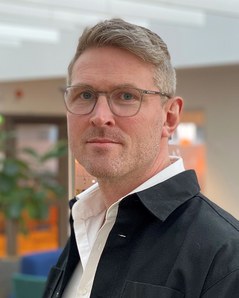Nordic youths want to learn more about work environments
A Nordic project could help young people learn more about work environments, starting in elementary school. The Swedish Agency for Work Environment Expertise is preparing a module for 13 to 18-year-olds to improve their work environment knowledge, and the hope is to spread this across the Nordics.
Today’s youths are facing a changing labour market. A report presented at the World Economic Forum says two-thirds of today’s school starters will be working in occupations that do not yet exist. Also in a shorter perspective, most young people will be facing a complicated and knowledge-oriented labour market.
Already we see that it takes longer for students to find permanent work after higher secondary education, which means many end up in short-term, precarious jobs. Anyone who does not know what they are entitled to when it comes to work environments and other rights, run a risk of injury which could otherwise have been avoided.
Nordic cooperation on work environment knowledge
That is why the Nordic Council of Ministers’ Working Environment Committee has initiated a pilot study run by the Swedish Agency for Work Environment Expertise. They will propose how to develop work environment knowledge for secondary school pupils, and then how to spread this across the Nordic region.
The Agency has established a project group which includes teachers, study and career advisors and researchers. They in turn report to a steering group made up of representatives for all of the Nordic countries. Soon the steering group will receive the first proposal for how work environment knowledge can be spread to pupils aged 13 to 16. If this is accepted, a work environment curriculum for this age group will be presented towards the end of the year.
 All the Nordic countries believe it is important for young people to learn more about work environments, says Robert Ljung, an analyst at the Agency for Work Environment Expertise. Some of the material can cover what work environments are, but it can also cover the labour market more generally. Everyday concerns are important. What is the impact on your health from sitting still, and how many screen hours are safe?
All the Nordic countries believe it is important for young people to learn more about work environments, says Robert Ljung, an analyst at the Agency for Work Environment Expertise. Some of the material can cover what work environments are, but it can also cover the labour market more generally. Everyday concerns are important. What is the impact on your health from sitting still, and how many screen hours are safe?
“One way of getting close to the student’s current reality is to use their school work environment as an example. We also aim to present the material we are developing in shorter sections which will remain interesting, informative and fun. They can be presented as films, plays or audio files. It should also be easy to translate the material into all the Nordic languages,” says Robert Ljung.
The working group believes it will be easier to get schools interested in the material by thinking in shorter education modules.
“Long processes are needed to get major changes into schools. Our material is meant to be no longer than two hours in total, divided into 20-minute sections. This makes it easier to put in a section wherever and whenever it suits,” says Robert Ljung,
“Preparing for the future, like”
Maria Guldbrandsson is one of the members of the Agency for Work Environment Expertise working group. She has been a secondary school teacher since 2008 and now works at the Thorén Framtid Kunnskapsakademin (the Knowledge Academy) at Alnön near Sundsvall.

Maria Guldbrandsson has investigated what upper secondary school students know about work environments. Photo: Fredrik Guldbrandsson
She graduated from the Mid Sweden University in January, and when she was about to write her essay on working life, health and rehabilitation she turned to the Agency for tips on a suitable topic in work environment research, which ended up being how work environment knowledge is being taught in elementary and upper secondary schools.
Maria Guldbrandsson chose to find out what upper secondary school students know about work environments, what work experience they have and what they think about the work environments of the future. She divided the student into four focus groups and interviewed them.
Two of the groups were made up of students preparing for university and two had students aiming for vocational training in trade and administration. In the groups with vocational students, around half had foreign backgrounds. The results will be presented in the essay “Preparing for the future, like”.
Having the energy for a working life
One of the conclusions is that there is a big difference in the knowledge about work environments between vocational students and those preparing for university.
“I was impressed by the students on the vocational programmes. They knew a lot, had experience from various workplaces and had reflected on what they had experienced. They know more about work environments and feel prepared for the labour market in a completely different way than those who are preparing for a university education.
“With being prepared comes a feeling of self-confidence, security and being able to manage on your own,” says Maria Guldbrandsson.
Those preparing for university, however, know very little about work environments. If they have thought about it at all, it is in relation to a summer job. Work environment knowledge does not form part of their education and is also not an aim in the curriculum.
“So it is not the teachers’ fault for not talking about work environments to students preparing for university. But these students also would like to know more. They can definitely count on more support from home, but they can also feel it is a bit ‘embarrassing’ to ask mummy for advice their whole life,” says Maria Guldbrandsson.
More motivating
With the vocational programmes, it is a different story. Knowledge about work environments is partly an aim of the programme. And even if these vary, practical learning in workplaces often gives students a good idea of what a work environment is, as well as a greater understanding of its importance.
This could include knowledge about things like ergonomics and lifting techniques. A female participant says ‘You are still, like, young, so you don’t want to ruin your body already”.
The students who Maria Guldbrandsson interviewed often expressed their worries about the psychosocial work environment, and some feared they would not have the energy to go through an entire working life.
“The students want to have the energy to work their whole lives. Those who are born abroad are keen to say that they want to be self-sufficient and not rely on benefits. Many have seen the risks involved in some work environments and do not want to become a burden on Swedish society. Several also face a greater pressure, because they know they might be expelled if they fail to get a job.”
Maria Guldbrandsson's conclusion is that the students are interested in work environment issues and that they want to learn more both theoretically and practically. Students doing vocational training are not worried about their future jobs, but all the students in the survey want more information about their rights, discrimination and health.
They also want more support in the workplace. Or as one student said: "I guess it's good to know what kind of rights you have and that... how things should be, so that you don't go to a super-bad workplace and think this is how it should be. Because many people don't know any better, like."
- Different interests
-
There is a great difference in young people's interest in work environments depending on whether they are in academic or vocational education. Photo: Yadid Levy/Norden.org
 Follow us on Facebook
Follow us on Facebook
